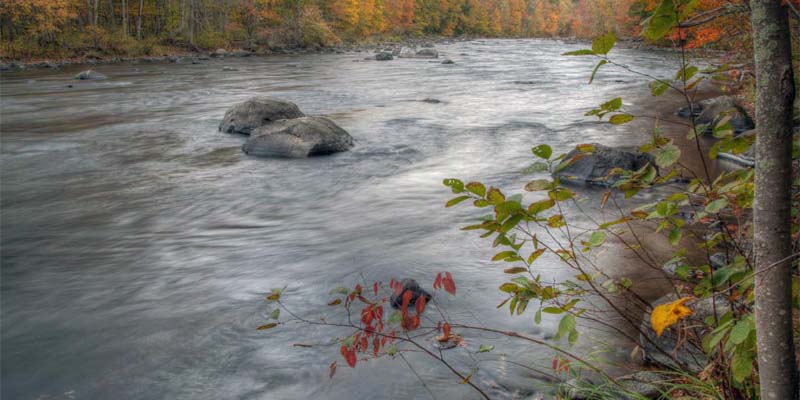
FARMINGTON RIVER OVERLAY PROTECTION DISTRICTS
". . . the River Overlay Protection Districts provide effective protection for the Farmington River's biological, scenic, and recreational resources." - Farmington Wild and Scenic River Study Final Report, May 1995
Between 1991 and 1992 the five river front towns in Connecticut (Hartland, Colebrook, Barkhamsted, New Hartford and Canton) and one town in Massachusetts (Tolland) passed zoning regulations known as the Farmington River Overlay Protection Districts. The Districts are intended to minimize the amount of activity within 100 feet of the river. Constructing new buildings, installing septic systems, and excavating sand and gravel are examples of activities prohibited in this zone. Additionally, there are limitations on vegetation removal in the zones. There are exceptions to these regulations for activities such as the enlargement of existing structures, for public access or transport, or limited timber harvest or clearing vegetation for river views. The town zoning commission through a special exception permit must approve exceptions.
Like the town votes of support for Wild and Scenic River Designation, these measures were necessary as expressions of local commitment to the protection of the Farmington River. The Districts provide the strong local protection, the first of the three levels of river protection -- town, state and federal. The benefits of maintaining undisturbed river shorelines are well documented, and include: controlling erosion and non-point sources of pollution; providing wildlife habitat; lowering water temperatures; reducing flooding; and providing unique aesthetic components which boaters, anglers and other river users rely for an enjoyable experience.
While the Districts were developed to provide water quality and riparian habitat protection, great efforts were made in the regulation language to ensure preservation of landowner property rights. Local residents approved these Districts with the understanding that strong community-based river protection measures were necessary in the context of achieving Wild and Scenic River designation. Responses to a citizen questionnaire demonstrated overwhelming support for the new districts (93% of respondents).
